Table of Contents
Introduction
Maintaining a successful cow farm is not simply a matter of raising cattle—it’s a matter of putting tradition together with contemporary knowledge to forge a sustainable and profitable enterprise. For generations, farmers have depended on cows for milk, fertilizer, and income.
Now, though, farming is more competitive, and the right strategies, proper planning, and effective management are needed to achieve success. In various breeds, the Holstein cow has emerged as a global favorite due to its tremendous milk yield and versatility.
Together with other well-known dairy cows, Holsteins are the backbone of most commercial dairy farms, enabling farmers to achieve maximum production while ensuring quality.
A cow farm is more than the actual location where cows are raised. It is an integrated system where land, cattle, feed, health care, and marketing combine to yield results. Farmers who succeed in this industry realize that success demands consistency and innovation.
Though traditional methods like grazing and hand-feeding are still crucial, new technology and scientific methods have revolutionized the way farmers tend to their cows and produce. That is where the key to success lies—small but effective tricks that make a huge impact in the long run.
The significance of the Holstein cow cannot be overemphasized. Revered for their black-and-white markings, Holsteins are renowned for yielding more milk than any other dairy breed of cattle.
Holsteins thrive under various climates, react well to proper nutrition, and can be efficiently controlled by means of good housing and health care. Once farmers concentrate on the optimal method, Holsteins become a steady earner and provider of sustained growth.
Their supremacy in the dairy market renders them a natural fit for farmers looking to succeed in local and international markets.
Today, in the agricultural sector, there are five mighty secrets that any cow farm owner must be aware of if they wish to remain competitive. These aren’t complex methods but do demand commitment and attention to detail.
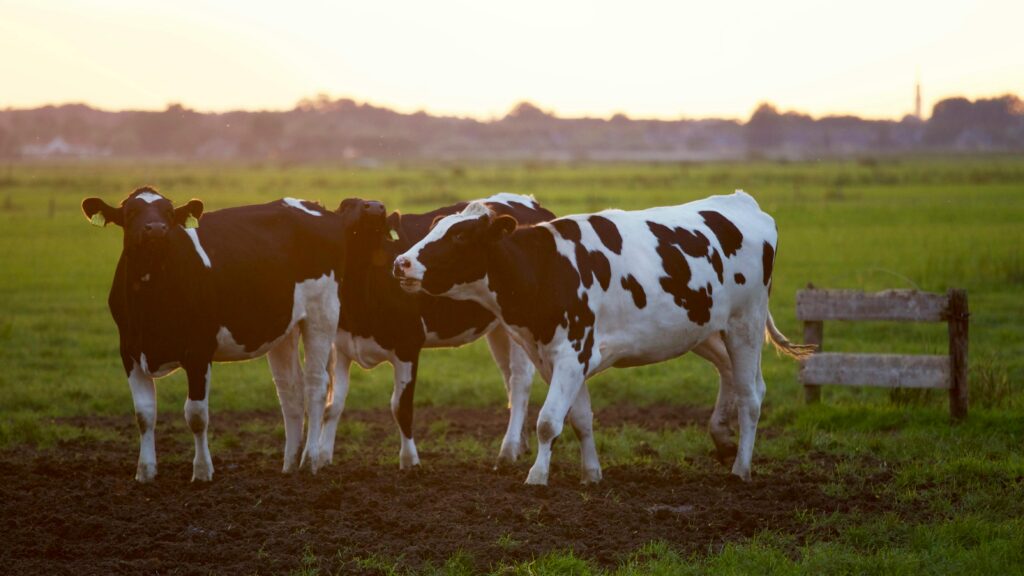
They involve attention to optimal nutrition, embracing new technology, maximizing herd health, efficient breeding, and establishing sustainable farm practices. Used appropriately, these secrets turn an ordinary farm into a productive, thriving entity.
This blog will walk you through these five secrets step by step with practical insights, real-life situations, and tips you can easily apply as a farmer.
Whether you are a first-time farmer beginning to start your first cow farm or an old farmer who wants to enhance productivity in the dairy business, this article will give you the knowledge you require.
We will also examine typical challenges, solutions, and questions most asked so that you leave here with a clear understanding of what it takes to be truly successful.
By the completion of this guide, not only will you know how to unlock the full potential of your cow farm, but also how to make your Holstein and other dairy cows healthier, more productive, and profitable.
With a combination of traditional knowledge and the latest strategies, success in dairy farming is well within grasp.
Benefits of Running a Successful Cow Farm
A cow farm has several benefits that extend far beyond the mere production of milk. For farmers, it gives a constant income source, means of employment, and food security. Meanwhile, for markets and communities, it provides constant supplies of healthy dairy products.
With proper strategies, farmers are able to make their operations sustainable, profitable, and growth-producing. Some of the major advantages of having a well-managed cow farm, particularly with regard to the Holstein cow and other milk-yielding cows, are given below.
Financial Security and Regular Income
One of the biggest advantages of having a cow farm is the financial security it provides. A dairy farm is a year-round venture since milk is demanded throughout the year. There is no off-season with milk production, unlike crops, so there is regular cash flow for farmers.
A well-nourished Holstein cow can yield 25–30 liters of milk per day, and it is one of the most valuable resources on the farm. The returns do not end at the sale of milk; farmers also earn by selling calves, manure, and by-products such as ghee, paneer, and butter.
This multi-income source brings financial stability and cuts down on dependence on off-farm employment.
High Productivity with Holstein Cow and Dairy Cows
The Holstein cow is the “queen of dairy farming” due to its incredible milk output. Holsteins produce more milk than other dairy cows on a consistent basis, making them particularly valuable to farmers.
This implies that the farmer with fewer Holstein cows will still manage to produce more than larger herds of less productive breeds.
Their ability to adapt also allows them to survive in various climatic conditions, as long as they receive the right care and feeding. This level of productivity assists farmers in increasing business and addressing the increasing demand for milk products locally and internationally.
Employment and Rural Development
Yet another significant advantage of a cow farm is that it generates employment and rural development. Dairy farming needs labor for feeding, sanitation, milking, and medical care, which provides employment in villages and small towns.
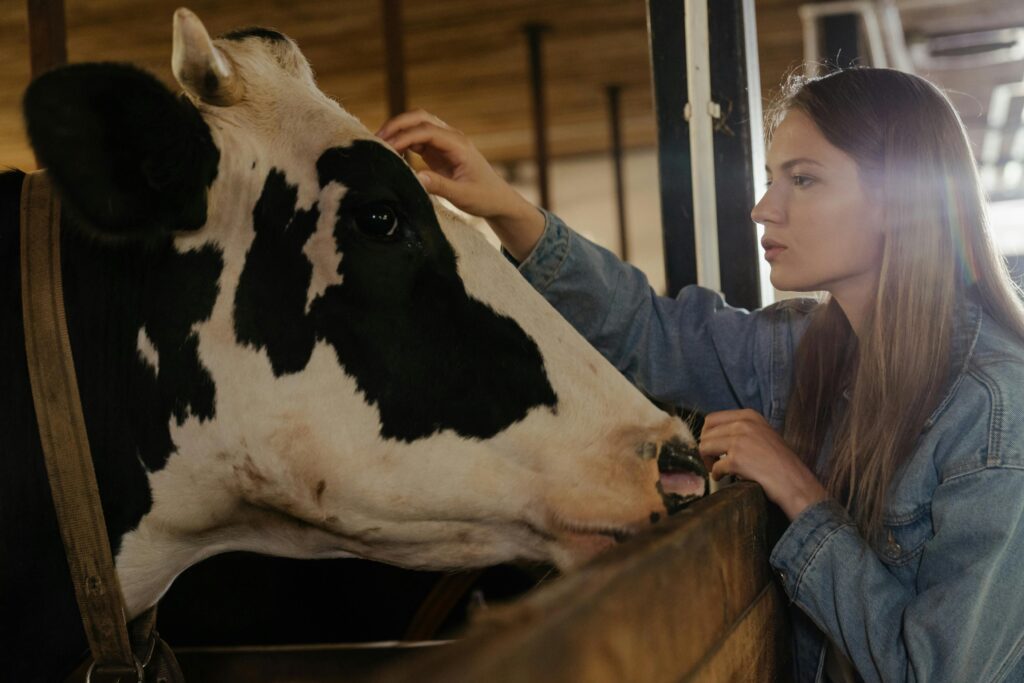
Moreover, dairy cooperatives and milk collection centers enhance rural economies by linking farmers to more extensive markets. This not only enhances the quality of life but also aids in curbing migration from rural to urban areas.
As the demand for dairy cattle such as Holsteins increases, more aspiring entrepreneurs are entering this industry, making dairy farming a vocation and not merely a time-honored activity.
Sustainable Agriculture and Environmentally Friendly Benefits
If cared for in the right way, a cow farm also has the benefit of sustainability. Cow dung is an organic manure that enhances the fertility of soil, decreases chemical usage, and raises crop output.
Other farms have even employed biogas plants to transform manure into clean energy, lowering family fuel expenses and preventing damage to the environment.
By having productive dairy cows, farmers can combine crop and animal farming, producing a balanced ecosystem that works for both the land and animals. The employment of the Holstein cow in the system guarantees greater milk production while maintaining the farm as ecologically friendly and efficient.
Nutritional Security for Families and Communities
Aside from profits, a cow farm provides nutritional security for communities and families. Dairy milk from fresh cows is a critical source of protein, calcium, and key vitamins.
With ownership of some Holsteins or other high-yielding animals, families can provide for themselves a supply of clean and nutritious dairy while selling the excess to local markets. This enhances food security and ensures improved health among rural communities.
Techniques: 5 Power Secrets for Success in Cow Farming
To develop a successful cow farm, farmers need to look beyond feeding and milking. Success is in the art of mastering some techniques that guarantee improved productivity, good animal health, and sustainable profits.
On the basis of hands-on farming experiences, research, and recommendations from successful dairy farmers, the following are the five effective secrets that every farmer should understand when breeding the Holstein cow and other yielding dairy cows.
1. Give Importance to Balanced Diet for Dairy Cows
The first key to success in a cow farm is to concentrate on nutrition. A well-developed Holstein cow can work at its optimum only when the diet is well balanced with the correct combination of roughage, concentrates, minerals, and water.
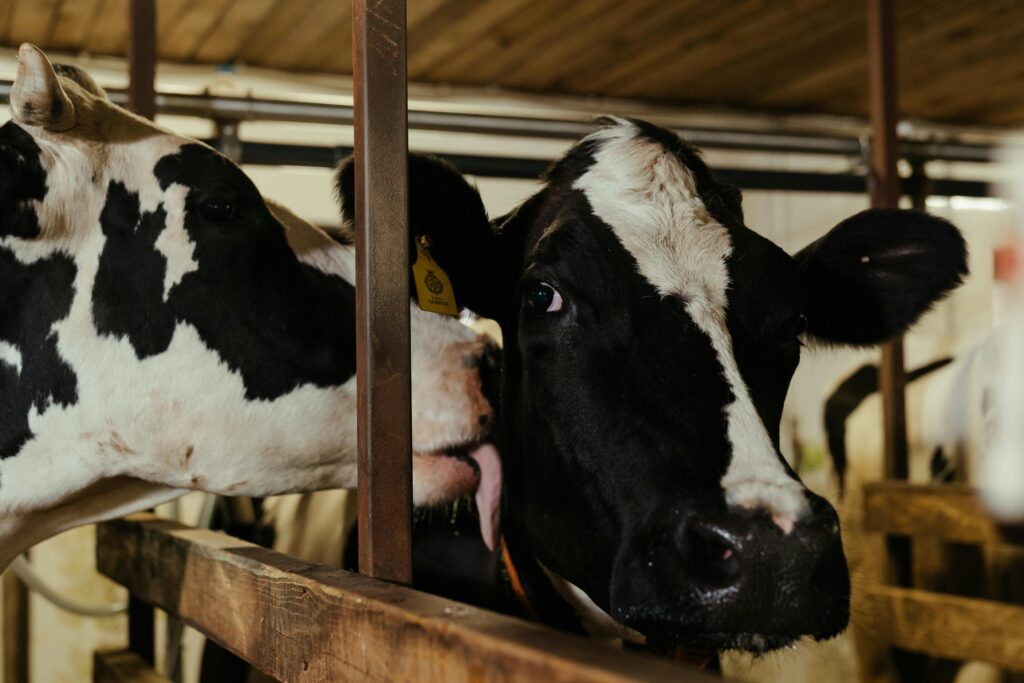
Farmers must see that cows are fed high-quality fodder like alfalfa, maize silage, or green grasses. In addition to fodder, grain-based concentrates containing high energy and protein enable high milk yields. Minerals such as phosphorus and calcium are equally vital to avert diseases such as milk fever.
Clean drinking water at all times is indispensable, as a single dairy cow consumes 60–100 liters of water per day. Through investment in proper feed management, farmers not only get more milk but also ensure that their cows are healthy and fertile in general.
2. Embrace Modern Technology for Better Management
The second cow farm success secret is accepting new technology. Automated milking systems, cow-tracking collars, and farm management software ensure faster and more efficient daily operations.
For instance, sensors are now used by most farmers to monitor the movement, feeding behavior, and illness signs of the Holstein cow, which alerts for early disease detection. Cooling systems, ventilated barns, and well-built housing structures make dairy cows comfortable even in sizzling summers.
Technology also makes labor cheaper, improves sanitation, and gives milk production consistency. Farmers who use traditional wisdom along with modern technology usually outshine others in productivity and profitability.
3. Herd Health and Disease Prevention
Healthy cows are the foundation of a profitable cow farm, which is why disease prevention is the third mighty secret. The Holstein cow, although very productive, is also subject to sloppy management and unhygienic conditions.
Farmers need to look after timely vaccinations, frequent deworming, and regular check-ups to safeguard cows from prevalent diseases such as mastitis, foot-and-mouth disease, and parasites.
Ensuring a clean cowshed, disinfecting equipment, and following biosecurity practices can significantly lower the risk of diseases. Furthermore, early detection of ill cows prevents the transmission of infection throughout the herd.
When the farmer invests in health care, his or her dairy cows remain active, give more milk, and have longer lives, making them give better returns on investment.
4. Enhance Breeding and Genetic Selection
The fourth secret entails concentrating on breeding and genetics. A strong breeding program will ensure that the next generations of cows are healthier, more productive, and resilient. Artificial Insemination (AI) is a common method used in contemporary cow farms to bring in the superior genetics into the herd.
Through choosing semen from high-yielding bulls, farmers can boost the milk production of their Holstein cows to a great extent. Crossbreeding solutions with other dairy cows can even give them advantages such as resistance to disease, fertility, and adaptability.
Accurate records of calving cycles, heat detection, and insemination programs enable farmers to attain uniform reproduction percentages, closing milk production gaps, and maximizing overall value of the herd.
5. Practice Eco-Friendly and Sustainable Farming
The last secret to long-term success with a cow farm is sustainability. Farmers who practice eco-friendly farming not only save money but also help save the environment. Cow dung can be used for organic manure, enhancing soil fertility and minimizing chemical use.
Placing biogas plants facilitates waste conversion into energy, reducing the use of firewood or LPG. Fodder crop farming and rotational grazing provide cows with constant supplies of fresh, nutritious food.
For the Holstein cow, being sustainable entails a well-designed housing system to minimize heat stress and promote comfort. Sustainable agriculture practices ensure healthier dairy cows, reduced costs, and increased community acceptance.
Challenges in Managing a Cow Farm
Although operating a cow farm is highly rewarding, it is not without challenges. Farmers who rely on Holstein cows and other high-producing dairy cows experience challenges when it comes to health, nutrition, and market fluctuations.
The best step toward finding workable solutions and achieving long-term success is to appreciate these challenges.
Increasing Feed Prices and Shortage of Good Quality Fodder
One of the most serious issues in running a cow farm is the expense of feed. High-quality fodder such as alfalfa and maize silage is not readily available on a consistent basis throughout the year, and when prices do increase, farmers find it difficult to obtain balanced nutrition for their cows.
With a high milk production capacity, the Holstein cow needs more energy and higher protein diets than local cattle breeds. Any relaxing of the nutritional standards directly diminishes productivity and impact profitability.
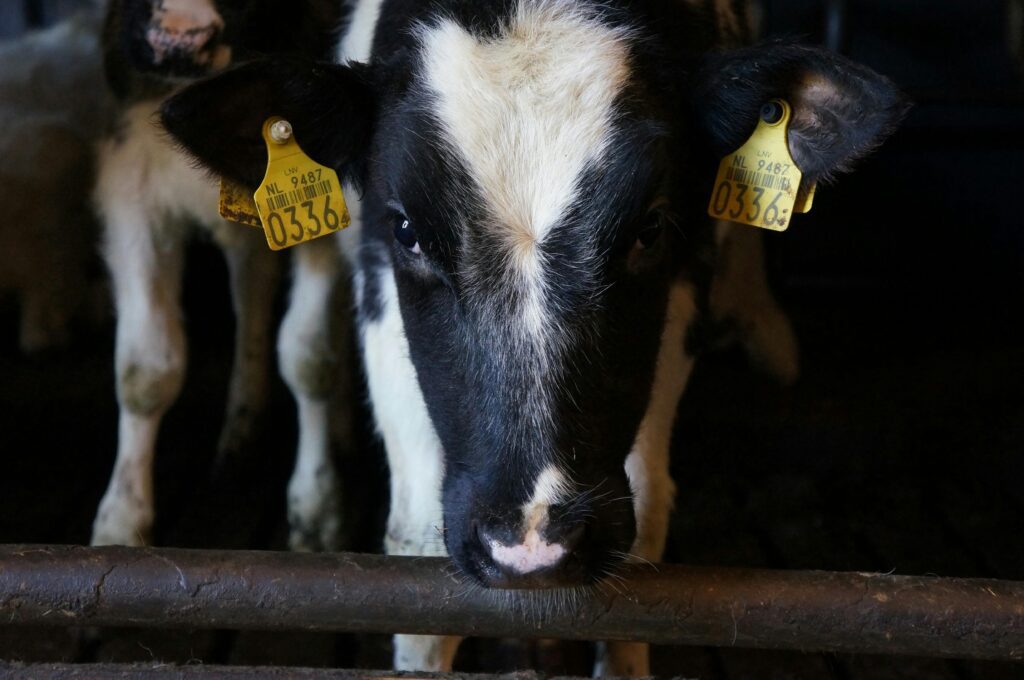
Small-scale farmers are confronted with the additional adversity of limited fodder land available, and thus rely on market feed suppliers.
Health Issues and Outbreaks of Disease
Dairy cow health is a key factor for farm success, but disease outbreaks are ever-present. Very productive breeds of cattle such as the Holstein cow are susceptible to diseases like mastitis, lameness, and reproductive tract disease.
Low levels of hygiene, dirty water, and poor housing contribute to these conditions. One outbreak of a disease can lead to huge economic losses through decreased milk production and a rise in veterinary bills.
In worse scenarios, it can kill a large number of cows, leaving farmers with an uphill task to rebuild their herds.
Market Fluctuations and Price Instability
Unpredictable milk prices are another challenge for owners of cow farms. Demand for dairy commodities is normally high, but market volatility can play spoilsport. Farmers usually have no control over cooperatives’, middlemen’s, or processors’ prices.
Milk prices during times of oversupply go down, which puts small farmers under economic pressure. Moreover, rural transportation and storage difficulties further minimize profit margins.
Although Holstein cow provides high milk production, declining selling prices may discourage farmers to further increase their operations.
Labor Shortages and Skilled Workforce Challenges
Operating a cow farm demands skilled labor for feeding, milking, sanitation, and healthcare management. Yet, most farmers face issues with labor shortages, especially in rural areas where young generations are gravitating toward urban employment.
The job is physically strenuous and needs regularity, which does not appeal to most workers. Without skilled labor, it becomes harder to deal with high-producing dairy cows such as Holsteins, particularly where tasks involving artificial insemination, disease identification, and milking practices are concerned.
Climate Challenges and Environmental Stress
Climate change also introduced another level of complexity for dairy farmers. Temperature increases, irregular rainfall, and weather extremes impact fodder quality and animal health. Highly productive Holstein cow is also prone to heat stress, leading to milk yield decline and disease susceptibility.
It is difficult for farmers without adequate cooling and housing facilities to keep cows comfortable even in sweltering summers. Moreover, over-reliance on chemicals and substandard waste disposal methods can negatively impact the environment, resulting in sustainable livelihood issues for cow farms in the long run.
Solutions: Overcoming Challenges in Cow Farming
There are challenges in every cow farm, but by proper planning and methodologies, farmers are able to overcome them and enjoy consistent growth. With the implementation of modern methods, emphasis on cattle care, and resource optimization, challenges can be turned into opportunities.
Some effective solutions to common issues associated with farmers dealing with the Holstein cow and other high-yielding dairy cows are listed below.
Affordable Feed Management and Fodder Security
Farmers can implement fodder cultivation strategies on their own land to cope with increasing feed prices. Cultivation of crops such as maize, sorghum, and Napier grass provides a steady source of green fodder.
Silage-making strategies also assist in harvesting excess fodder during the harvesting season for consumption in lean periods. Farmer groups can form community fodder banks to provide feed at reduced prices.
For high-yielding breeds like the Holstein cow, balanced Total Mixed Rations (TMR) can be prepared using locally available ingredients, reducing dependence on costly market feeds.
Preventive Healthcare and Regular Monitoring
Instead of waiting for diseases to strike, farmers should focus on preventive healthcare. Timely vaccinations, deworming schedules, and veterinary check-ups can save both cows and money in the long run.
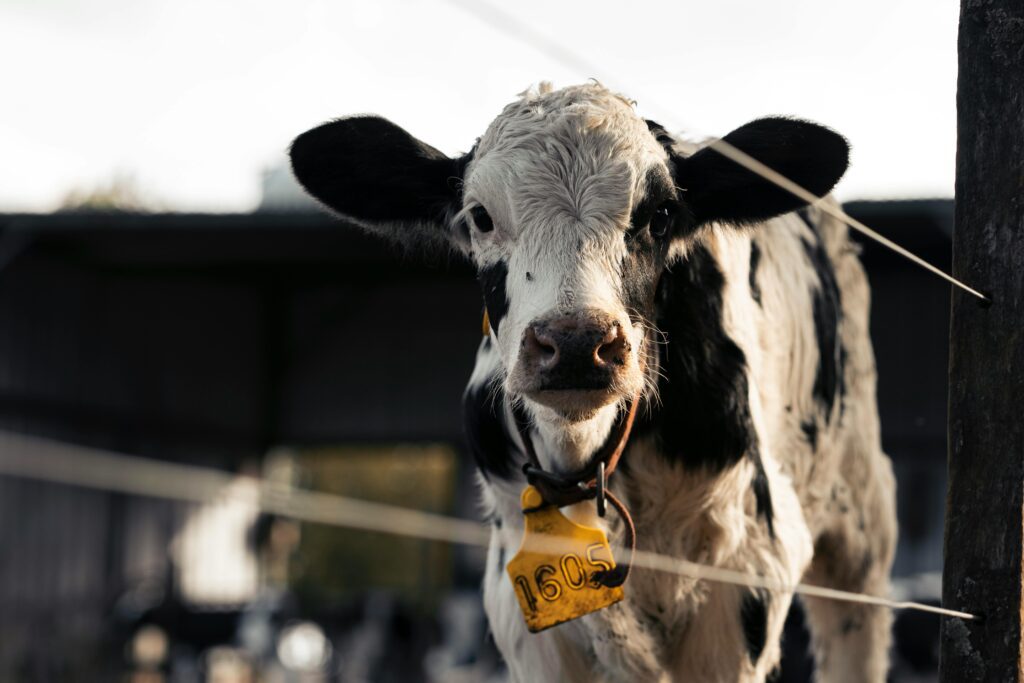
Clean water supply, hygienic housing, and disinfected equipment minimize the risk of infections such as mastitis and foot rot. Early detection of disease in dairy cows is facilitated by modern equipment such as automated sensors and cow monitoring collars, which expedites faster treatment.
Preventive care for sensitive breeds like the Holstein cow guarantees maximum productivity and extended lifespan.
Market Linkages and Value Addition
To address price instability, farmers need to establish close linkages with cooperatives, private milk plants, and direct consumer organizations. Establishing local milk collection centers enhances bargaining leverage and ensures improved returns.
Farmers can also look at value addition by making products such as cheese, ghee, butter, and yogurt, which command higher prices than liquid milk. By marketing their produce as organic or farm-fresh, owners of cow farms are able to sell to niche markets who will pay premium prices.
This helps to minimize reliance on fluctuating market prices and increase profitability.
Training, Automation, and Labour Solutions
Shortages of labour can be overcome by having family members and rural youth trained in up-to-date dairy techniques. Government schemes and agricultural universities frequently offer free or subsidized training to farmers.
Basic automation devices like automatic waterers, milking machines, and feed mixers eliminate labor requirements. Not only is time saved, but there is also better efficiency.
With Holsteins and other dairy animals, efficient milking techniques through equipment also prevent mastitis and ensure milk sanitation, making it a win-win situation for both the farmers and animals.
Climate Adaptation and Sustainable Practices
To manage climate-related problems, farmers need to invest in cow comfort and green practices. Shaded sheds, ventilation, and cooling systems reduce heat stress among the Holstein cow, which is particularly sensitive to temperature.
Rainwater harvesting, silage storage, and solar-powered equipment make the system more adaptive to changes in the environment. Involving crop farming with dairy farming also gives natural sources of fodder as well as improving soil health.
By adopting waste-to-energy plants such as biogas plants, owners of cow farms save money as well as ensure environmental sustainability.
FAQs for Cow Farm Success with Holstein Cow & Dairy Cows
1. Why is a Holstein cow the best breed for a cow farm?
The Holstein is the world’s most productive dairy breed due to its unmatchable yield of milk. On a typical cow farm, a healthy Holstein will yield 25–30 liters of milk per day, much more than most local breeds. Their feasibility across various climates and excellent feed conversion make them a lucrative option.
Yet, they are in need of good nutrition, decent housing, and good healthcare. Managed properly, Holsteins dramatically increase farmers’ income.
2. How do I minimize feed costs on my cow farm without influencing dairy cow productivity?
Feed expenses are one of the largest problems associated with running a cow farm. To minimize costs, farmers can cultivate their own fodder crops like maize, Napier grass, or sorghum. Silage production keeps fodder reserved for lean times.
Utilizing locally sourced ingredients such as crop residues, oil cakes, and by-products in well-balanced rations is cost-saving. For high-productive dairy cows like the Holstein, feeding Total Mixed Rations (TMR) guarantees that they receive all necessary nutrients without wastage.
3. What are the common health issues of Holstein cows and how can they be avoided?
The Holstein cow is susceptible to some health complications such as mastitis, lameness, and reproductive disorders because of its high milk production. In a cow farm, these complications can be avoided through safe housing, frequent vet visits, and prompt vaccinations.
Good milking hygiene, mineral supplementation, and healthy feeding minimize disease threats. Timely detection with the aid of advanced equipment such as health collars or sensors also enhances the management of diseases in Holsteins and other dairy cattle.
4. How can a small farmer turn a cow farm profitable having only 3–5 dairy cows?
Profitability is not always a function of the herd size. Even with 3–5 dairy cows, a farmer can operate a profitable cow farm by emphasizing quality over quantity. Selecting high-yielding breeds such as the Holstein cow, implementing modern feeding practices, and providing proper health care are key.
Producers can also gain additional income by marketing value-added products such as paneer, ghee, or yogurt. Direct selling to neighboring households, stores, or schools tends to yield greater incomes compared to depending entirely on cooperatives.
5. What are the implications of climate change for a cow farm, and how are they addressed?
Climate change impacts feed supply, water supply, and cow comfort. Holstein cow, being very productive, is especially vulnerable to heat stress, which decreases milk production. Farmers can safeguard their dairy cows by offering shaded sheds, fans, misting systems, and ventilation.
Water harvesting and silage storage ensure resource availability during droughts. Environment-friendly measures such as biogas plants and solar panels cut expenditure while turning the cow farm climate-resilient and sustainable.
Conclusion
Operating a successful cow farm demands commitment, expertise, and an attitude to embrace contemporary methods while being careful not to destroy traditional practices.
Deliberating on the five highly influential secrets—correct feeding, new technology, herd health, breeding and genetics, and sustainable farming—farmers can easily enhance productivity and profitability.
The Holstein cow, boasting high milk production, continues to be the backbone of a successful dairy cow operation. Effective management guarantees not just improved milk yield but also healthier, longer-lived cows that benefit long-term farm prosperity.
Problems like increasing feed prices, disease incidence, shortage of labor, and climatic stress are unavoidable in dairy farming. But with practical measures like cultivation of fodder, preventive health care, mechanization, market linkages, and green practices, these problems can be successfully managed.
Farmers employing these measures convert their cow farm into a sustainable, profitable, and robust venture.
A successful cow farm is not only advantageous for the farmer financially—it also sustains rural livelihoods, provides food security, and spurs on sustainable agricultural production.
By taking care of dairy cows such as the Holstein, farmers are able to raise quality milk, generate value-added products, and derive a reliable income stream. Blending advanced methods with judicious management establishes a system where animals and people thrive.
For anyone who wants to establish or enhance a cow farm, the bottom line is obvious: intelligence, planning, and consistency are more important than having a large herd. Begin with a modest start, aim for quality, and grow steadily while using the five secrets.
The outcome will be a productive, profitable, and sustainable farm that will last forever.
Invest in your Holsteins, nurture your dairy cows, and implement the strategies in this manual. Your path to cow farm success starts with intelligent choices, hard work, and a commitment to excellence.
With these insights, you are not only building a secure future for your farm but also to a better, healthier dairy industry.

Pingback: Sheep Farm Growth: 11 Powerful Secrets Using Dairy Sheep in a Modern Sheep Station -
Absolutely, unpredictable market conditions are a major challenge for sheep farmers. Fluctuations in wool, meat, and dairy prices—driven by trade, consumer demand, or weather—can significantly impact profitability. Diversifying products, adopting modern marketing strategies, and monitoring market trends closely can help farmers navigate these uncertainties more effectively.
Pingback: Animal Nutrition: 7 Powerful Strategies for Optimal Cattle Feed and Cow Feed -
Absolutely! Proper cattle nutrition is the foundation of a healthy and productive dairy farm. By understanding and applying balanced feeding practices, farmers can significantly improve milk yield, animal health, and overall farm profitability.